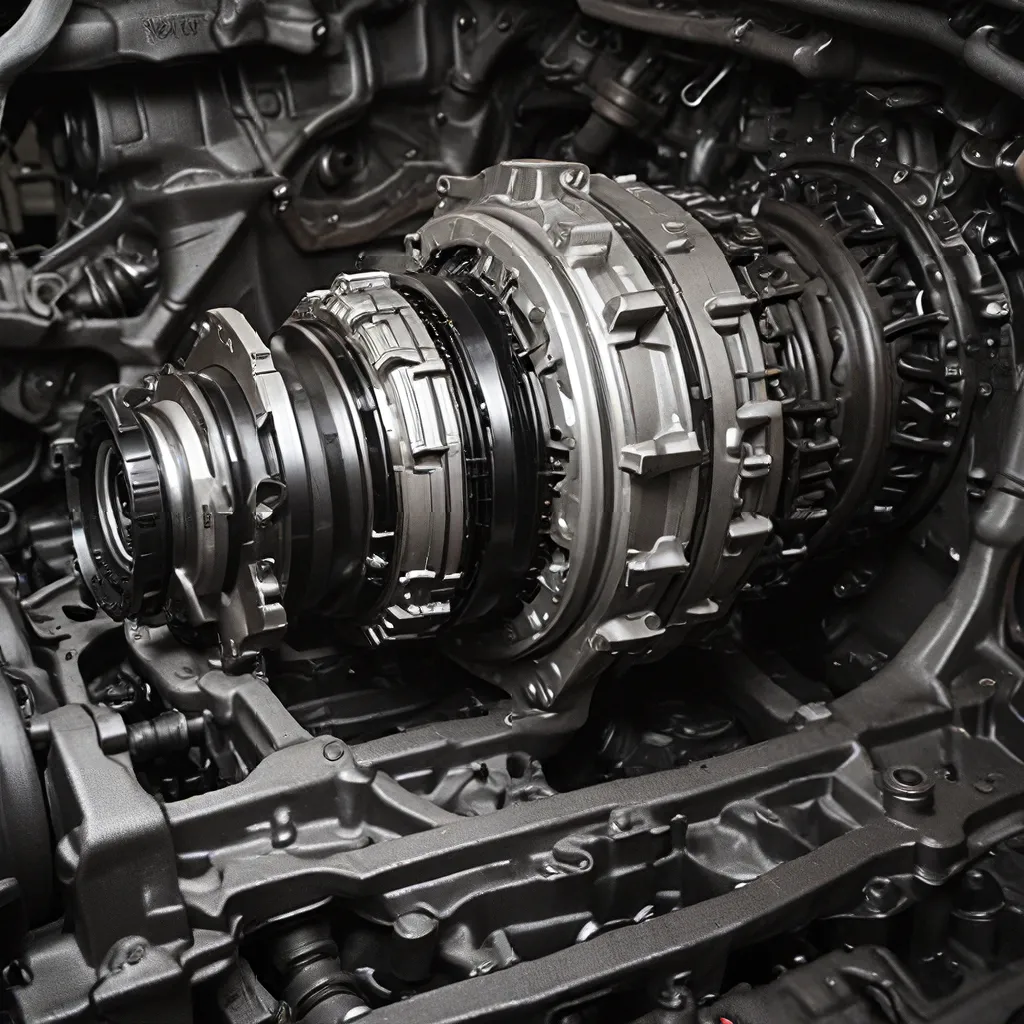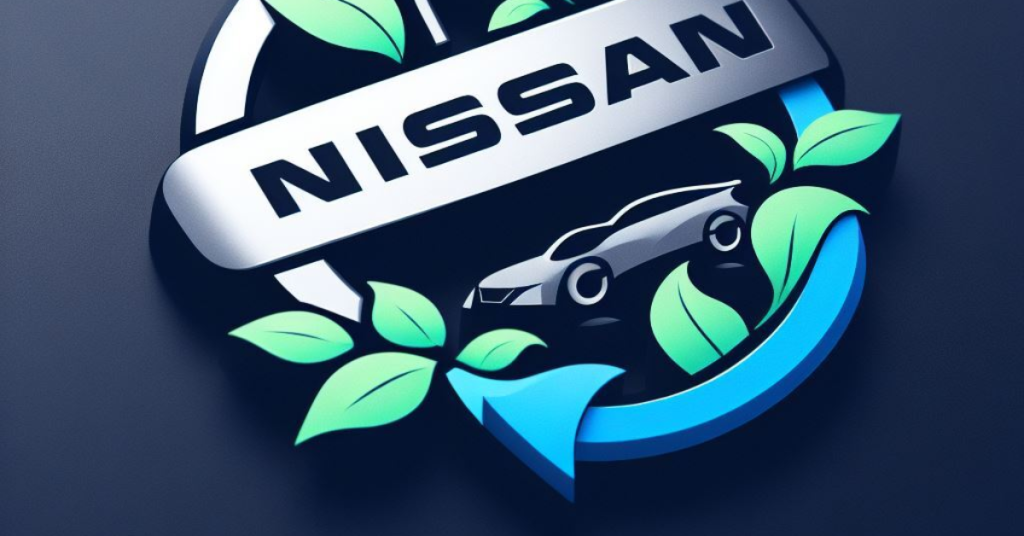
Ah, the joys of owning a Nissan! From the sleek Altima to the rugged Titan, these cars have a lot to offer. But let’s be honest, no vehicle is perfect – and Nissan transmissions are no exception. Whether you’re dealing with shifting issues, leaks, or downright failures, transmission problems can be a real pain in the you-know-what.
As a long-time Nissan enthusiast and self-proclaimed transmission whisperer, I’m here to share my expertise and guide you through the sometimes murky waters of Nissan transmission troubleshooting. So, buckle up and get ready to learn how to tackle those pesky transmission problems head-on.
Understanding Nissan Transmissions
Nissan has used a variety of transmission types over the years, from traditional automatics to the increasingly popular continuously variable transmissions (CVTs). Each type has its own unique quirks and potential issues, so it’s important to understand the basics before diving into troubleshooting.
Automatic Transmissions
Nissan’s traditional automatic transmissions, like the ones found in the Altima and Maxima, use a system of planetary gears, clutches, and hydraulic fluid to transfer power from the engine to the wheels. These transmissions are generally reliable, but they can still experience problems like slipping, delayed engagement, and even complete failure.
Continuously Variable Transmissions (CVTs)
CVTs, on the other hand, use a system of belts and pulleys to provide an infinite number of gear ratios, rather than the fixed gear sets of a traditional automatic. This design can offer improved fuel efficiency and a smoother driving experience, but it also comes with its own set of challenges. CVT issues can include shuddering, whining noises, and premature wear.
Regardless of the transmission type, the key to tackling Nissan transmission problems is to understand the common issues and have a solid troubleshooting process in place. Let’s dive in, shall we?
Common Nissan Transmission Problems
As a veteran Nissan technician, I’ve seen my fair share of transmission problems over the years. Here are some of the most common issues you might encounter:
Shifting Concerns
One of the most frequent complaints I hear from Nissan owners is issues with shifting, whether it’s delayed engagement, erratic shifting, or even complete transmission failure. These problems can be caused by a variety of factors, from low fluid levels to worn-out components.
Pin-fit problems, for example, can be a real headache. This occurs when the transmission’s internal components don’t fit together properly, leading to all sorts of shifting woes. And let’s not forget about the dreaded “slipping transmission” – a telltale sign that something is amiss.
Leaks and Fluid Issues
Transmission fluid is the lifeblood of your Nissan’s gearbox, and any issues with leaks or contamination can quickly lead to big problems. Seals and gaskets can break down over time, allowing precious fluid to escape and putting your transmission at risk of overheating and premature wear.
And speaking of fluid, it’s crucial to use the right type and maintain the proper levels. Mixing incompatible fluids or neglecting to change it at the recommended intervals can wreak havoc on your transmission’s performance and longevity.
Overheating and Damage
Transmission overheating is another common issue, especially in vehicles that are used for towing, hauling, or frequent high-speed driving. When the transmission gets too hot, it can lead to accelerated wear, slipping, and even complete failure.
Nissan transmissions can also be susceptible to damage from things like debris, contamination, and even manufacturing defects. And let’s not forget about those pesky electrical gremlins – a faulty sensor or wiring problem can cause all sorts of transmission headaches.
Diagnosing Nissan Transmission Issues
Now that we’ve covered some of the most common Nissan transmission problems, let’s talk about the all-important diagnosis process. After all, you can’t fix what you can’t identify, right?
Gathering Information
The first step in troubleshooting Nissan transmission issues is to gather as much information as possible. Start by asking yourself (or your mechanic) a few key questions:
- When does the problem occur? Is it only during acceleration, or does it happen at all speeds?
- What kind of symptoms are you experiencing? Is there a delayed response, unusual noises, or a complete loss of power?
- Have you noticed any warning lights or error codes? These can provide valuable clues about the root of the issue.
- Have you had any recent work done on the transmission? Even a simple fluid change can sometimes uncover underlying problems.
Gathering this information will help you (or your mechanic) narrow down the potential causes and develop a targeted troubleshooting plan.
Visual Inspection
Once you’ve collected the necessary information, it’s time to take a closer look at the transmission itself. Start by checking for any obvious signs of leaks, damage, or wear. Look for things like:
- Fluid leaks – Check around the transmission housing, seals, and cooler lines for any drips or dampness.
- Worn or damaged components – Inspect the transmission for any cracked or worn parts, such as the torque converter, clutches, or gears.
- Contamination – Look for any debris, metal shavings, or discoloration in the transmission fluid, which could indicate internal damage.
Conducting a thorough visual inspection can often uncover the root cause of the problem and save you a lot of time and money in the long run.
Diagnostic Testing
If the visual inspection doesn’t reveal the issue, it’s time to break out the big guns: diagnostic testing. This typically involves using a specialized tool to read any trouble codes stored in the transmission’s computer and perform a series of tests to check for proper operation.
Some key diagnostic tests you (or your mechanic) might perform include:
- Fluid pressure and flow tests – Checking the transmission’s hydraulic system for proper pressure and flow can help identify issues with the pump, valves, or internal components.
- Shift pattern tests – Monitoring the transmission’s shifting behavior can reveal problems with the clutches, bands, or electronic control systems.
- Torque converter tests – Evaluating the torque converter’s operation can help diagnose issues like stalling, shuddering, or premature wear.
The specific tests and procedures will depend on the transmission type and the symptoms you’re experiencing, but a thorough diagnostic process is essential for getting to the root of the problem.
Tackling Nissan Transmission Repairs
Once you’ve identified the issue, it’s time to tackle the repairs. Depending on the problem, the fix could be as simple as a fluid change or as complex as a full transmission rebuild. Let’s take a look at some common repair solutions:
Fluid and Filter Changes
One of the most basic (and often overlooked) steps in maintaining a healthy Nissan transmission is regularly changing the fluid and filter. Over time, the fluid can become contaminated with debris, and the filter can become clogged, leading to all sorts of problems.
By following the manufacturer’s recommended service intervals and using the correct type of transmission fluid, you can help extend the life of your Nissan’s transmission and potentially avoid more costly repairs down the road.
Component Replacement
If the problem is due to a specific component failure, such as a worn clutch or damaged gear, you may need to replace the affected part. This could involve removing the transmission and disassembling it to access the internal components.
Nissan CVT transmissions, in particular, can be prone to issues with the pulleys, belts, and other internal components, so it’s important to address any problems promptly to prevent further damage.
Transmission Rebuild or Replacement
In some cases, the transmission may be beyond repair, and a complete rebuild or replacement may be necessary. This is typically the most expensive option, but it may be the only way to restore your Nissan’s transmission to full functionality.
During a rebuild, the technician will disassemble the transmission, inspect all the components, and replace any worn or damaged parts. They’ll also clean and inspect the housing, and ensure that everything is reassembled correctly.
If the transmission is too far gone, or if the cost of a rebuild is prohibitive, you may need to consider a replacement. This can be a significant investment, but it can also be the best way to get your Nissan back on the road and running like new.
Preventative Maintenance for Nissan Transmissions
Okay, so we’ve covered the common problems and repair options, but what about prevention? After all, the best way to tackle Nissan transmission issues is to avoid them in the first place, right?
Here are some key tips for keeping your Nissan’s transmission in tip-top shape:
Regular Fluid Changes
As I mentioned earlier, maintaining the proper transmission fluid level and changing it at the recommended intervals is crucial. Neglecting this simple task can lead to all sorts of problems, from shifting issues to premature wear and tear.
Monitoring Fluid Condition
In addition to changing the fluid, it’s a good idea to periodically check the condition of the fluid. Look for any signs of contamination, discoloration, or unusual smells, as these can be early warning signs of a problem.
Avoiding Towing and Hauling Extremes
If you use your Nissan for towing or hauling heavy loads, be mindful of the added strain on the transmission. Consider installing a transmission cooler to help keep the fluid at a safe temperature, and avoid pushing the limits of your vehicle’s capabilities.
Seeking Professional Maintenance
Finally, don’t be afraid to enlist the help of a qualified Nissan technician. Regular maintenance and inspections can go a long way in identifying and addressing any potential issues before they become major problems.
At the end of the day, a little proactive care and attention can go a long way in keeping your Nissan’s transmission running smoothly for years to come. And hey, if you ever find yourself in a bind, you know where to find me – the self-proclaimed transmission whisperer, always ready to lend a helping hand (and a few bad puns).
Now, if you’ll excuse me, I’ve got a date with a Nissan Altima and a cup of coffee. Happy driving, my friends!






